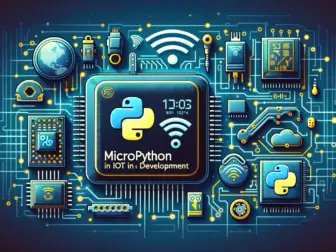Tag - MicroPython education
Exploring the World of MicroPython: A Comprehensive Guide to MicroPython Education
MicroPython is a lean and efficient implementation of the Python 3 programming language that is optimized to run on microcontrollers and small embedded systems. It provides a simple and intuitive way to program hardware, making it an excellent platform for beginners to learn about electronics and programming.
Educators are increasingly recognizing the value of teaching MicroPython in schools and universities as a way to introduce students to the world of embedded systems and the Internet of Things (IoT). By using MicroPython, students can quickly prototype and build projects that interact with the physical world, gaining hands-on experience that enhances their understanding of programming concepts.
One of the key advantages of MicroPython is its ease of use. The language is designed to be beginner-friendly, with a syntax that closely resembles Python, one of the most popular programming languages in the world. This makes it accessible to students with little to no programming experience, allowing them to focus on learning the basics of coding while also gaining practical skills in hardware development.
In addition to its simplicity, MicroPython offers a rich set of libraries and modules that provide powerful capabilities for interfacing with sensors, actuators, and other hardware components. This allows students to explore a wide range of projects, from building simple LED blinkers to creating complex IoT devices that can communicate over the internet.
To support educators in teaching MicroPython, there are a growing number of resources available, including online tutorials, textbooks, and hands-on workshops. These resources cover topics such as setting up a MicroPython development environment, writing and executing code, and interfacing with hardware components. They also provide project ideas and examples that can inspire students to explore their creativity and build their own innovative solutions.
As the demand for skilled professionals in the field of embedded systems continues to grow, learning MicroPython can provide students with a valuable skill set that prepares them for future careers in technology. By gaining experience in programming microcontrollers and developing IoT devices, students can enhance their problem-solving abilities and critical thinking skills, making them more competitive in the job market.
In conclusion, MicroPython education offers a unique opportunity for students to explore the exciting world of embedded systems and IoT. By providing a user-friendly platform for programming hardware, MicroPython enables students to develop practical skills in coding and electronics, setting them up for success in a rapidly evolving technology landscape.
